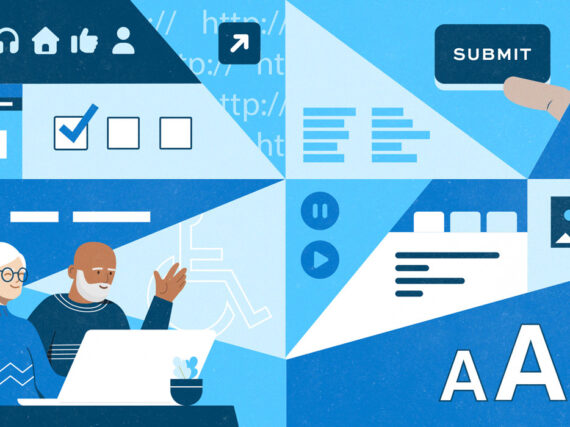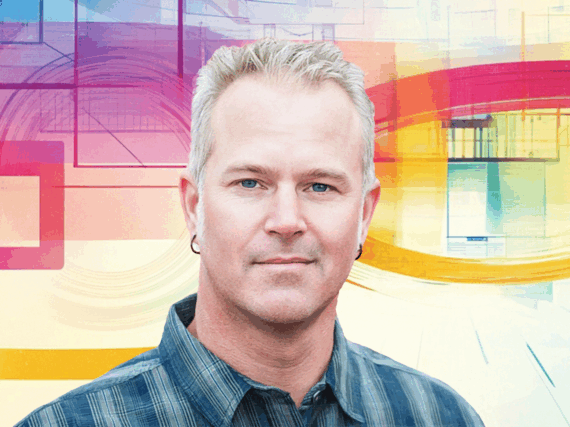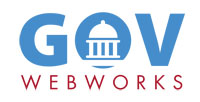“The field of public interest technology is having a moment,” says Tara McGuinness, co author with Hana Schank of Power to the Public: The Promise of Public Interest Technology.
“There’s awareness because so many people needed assistance during the pandemic,” explains Hana. “A segment of the population may have already found interacting with government difficult, but in 2020 the number of people who needed help and weren’t able to get it grew significantly.”
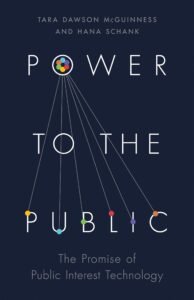
The book defines public interest technology (PIT) as the application of data, design, and delivery to advance the public interest and promote the public good in the digital age. The “three Ds” are shorthand for the combination of using real-time data to guide problem solving, understanding human needs to inform design, and incremental delivery to allow for continuous improvement.
The authors connected over public interest tech after working in different areas of government, Tara in public policy for Obamacare at the White House and Hana in user-experience design at US Digital Service (USDS) and the Department of Homeland Security. Based on these experiences and further research, Hana was part of a report on the topic for New America, and Tara developed a course at Georgetown’s McCourt School of Public Policy. “Hana and I were both looking at different parts of the picture,” says Tara. “That resulted in much of the information in the book.”
Published in 2020, it has garnered praise from high-profile technologists and leaders, including LinkedIn alum DJ Patil and former President Barack Obama.
“Power to the Public illustrates how nonprofits and governments can use technology to solve some of the most pressing issues of our time,” Obama said on Twitter. “It is worth a read for anyone who cares about making change happen.”
We spoke with Tara and Hana about the ways government agencies can embrace public interest technology.
Why did you write this book?
Tara: We wrote it for two audiences. The people doing the work, such as the public servants in the states and the nonprofit partners, and people interested in getting into the work.
We wanted to make visible the collective impact of nearly a decade of Code for America, 18F, USDS, and other companies and nonprofits doing this work.
It’s a message to people who are trying to solve hard problems in government offices that they can be part of a growing community of public interest technologists who are doing things differently.
What do you see as the biggest hurdles in updating online government services to meet user needs?
Tara: When updating government services, you don’t get to stop and start fresh. You have to renovate and update the services while still providing them, without a moment’s breath or a week’s pause. It’s like renovating a house you live in without moving out. Renovating a system that was built years ago is profoundly more difficult than starting from scratch.
Hana: We’re also trying to do something that has never been done before.
“We’re seeking to create a responsive government in a nation of this size, that is also a federation, and get people to use a new technology to do that. There isn’t a one-to-one model of this place-did-this, so let’s do that. It’s uncharted territory.”
How can public interest technology make a difference?
Tara: To give one example, across the country there’s a big conversation about paid leave. Only 23 percent of Americans have access to paid leave, and many states have passed paid leave laws but many of them are not at the level people say they need. In the work we do at the New Practice Lab at New America, we’re using the principles of data, design, and delivery to support family economic security and well-being.
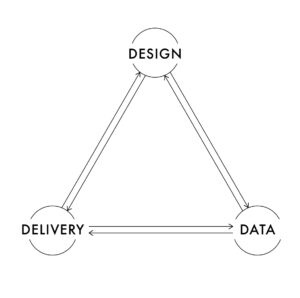
When we looked at the data, we had an interesting insight that some states have two policies, one for temporary disability insurance and one that’s a newer paid leave, and together you get the benefits. Most people were using one or the other and not getting their full leave because they didn’t realize you had to enroll twice.
“Without the real-time data to see who you are reaching, and the ability to test materials or designs to find out if they are confusing, you miss an opportunity to best serve people, even with a policy that so many families say they need.”
This is an example of where you can make the process less confusing if the next generation of states passing this policy can make these adjustments.
What, if anything, is holding government back from being more human-centered?
Tara: It is architected that the more senior you get in government, the farther away you get from a customer or client. It takes a culture of driving the message that customer service matters. You need to have this message ‘we are public servants’ both from the top and all the way through. People want to make it better. There are many rules in government to make sure you don’t give someone a benefit that they don’t deserve, there are fewer rules saying your job is to make sure they get the benefit. We need driving goals and north stars like the Biden administration’s recent executive order to ensure responsible delivery of digital assets.
Hana: The executive order helps federal agencies shift their mindset from being mission driven, to serving the people. When I was at the Department of Homeland Security, the mission was to “prevent terrorism” period, end of story, we don’t care if everybody must wait in the TSA line for three hours and miss their flight as long as we prevented terrorism. This executive order is an important step in saying, “Yes, you have your mission, but part of that mission is also meeting user needs, and here’s what that looks like.”
For example, if you ask people in the state department, “What’s the biggest pressing issue facing the state department?” they are probably not going to say, “Gee, it’s really hard to renew a passport.” But, if you ask the public, “What do you think the number one thing the state department could do to make your lives easier?” they might say, “Make it easier to renew my passport.” So there’s a gap there, and the executive order encourages agencies to start to close that gap.
“I don’t think any one entity can do this alone, it is going to require work from leaders who are articulating that the game is changing. It is a process of greater co-creation of programs, greater listening to what people really need and how they need it.”
How does public interest technology benefit government?
Tara: I do believe we can restore trust in government if people’s lived experience with government makes them feel: seen, heard, and understood. User-centered methods of allowing voice and contributions in a tighter feedback loop are really important to that.
“Part of meeting user needs upholds a democratic principle of ‘Am I heard? Does anyone understand what my life is like? I pay taxes, this is my city, county, state. Is the government working for me?'”
How do agencies take this info and enact change?
Tara: First, they need to get the data. There’s all this data that sits somewhere, but isn’t accessible to the person who could do something with it. It’s remarkable how many program administrators don’t know who’s using a program or how it’s doing on a daily/weekly basis in reaching those people.
“They need real-time data that enables program overseers to understand who they are reaching and who they are not.”
Second is determining how best to communicate what the program is, or how to get a benefit, and testing with real humans to see where they get stuck. “In one example, 100 percent of people who received a certain letter from the tax agency thought they were being audited, when they were just being asked for more information. If you don’t test, you might not know that.”
Hana: Testing with real humans can be challenging for people in government as there are a lot of regulations and boxes to check, and that can disincentivize doing that work. But that doesn’t mean people in government don’t want to know that information, they can look to people outside of government who are often doing this work to gather that data.
You mention in the book that Abraham Lincoln used to meet with people just to listen to what they had to say. Is this no longer possible?
Tara: It is an old tradition in the US government that people drive the government. President Lincoln upheld that with his multiple days of office hours, but this notion needs to be renovated and refreshed with the tools of the modern era.
“If we want to deliver in the year 2022, we need new tools of engaging the public just as we have always done. So, if open listening sessions were the Lincoln era, we need to have similar listening to the public today.”
What can we learn from other countries?
Tara: There are green shoots around the globe of people trying new things that are working. We read a story about a cash-to-gig workers program in Germany where a man on the street described it as simple and easy to use, and Hana and I were like, “What’s happening there?”
In our conversation with the people who drove the program, they said they had been through more than one economic crisis so the German deputy Finance Ministere said something like, ‘Are we going to crash our economy because we can’t trust people? We’re here to serve, and a moment of crisis is different from other situations.’
“How fast you get cash to families is the difference between them keeping their home and being homeless. Speed is really important in crisis moments. They were actively thinking about not only having the cash ready, but having it fast and accessible.”
Hana: The other part I liked about the German example is that the language on the form was not adversarial, as in, ‘Prove to us you need the money.’ It was more like, ‘You are a person in need, tell us what the need is, and don’t worry, we have your back.’ I’d never seen that on a government form and it was pretty striking.
How can private sector vendors help?
Hana: Government vendors need to be asking, ‘How do we help move government along?’ The private sector is, to some extent, as culpable as government for the current state of affairs because when government asks for a crappy website the private sector lines up to deliver it for them.
Government agencies don’t always have the knowledge in house to know what to ask for, sometimes they haven’t done the work to understand their needs, or even know it’s a thing they can do. They are in a hurry, and just want to get a system procured.
The private sector needs to push back against crappy RFPs and to say, ‘What you are asking for is not the right thing. Let us educate you and bring you along with us. We’re going to tell you what the right thing is and it turns out it is going to be cheaper, or it will be an investment but it’s going to pay off, and here’s why.’
“The goal as a private sector vendor for government should be to serve the American people. Sometimes they say, ‘Well, we’re just giving them what they asked for,’ but that’s not enough anymore. The private sector needs to be a good faith actor and push back when asked to build something they know is going to fail, or is not the right thing.”
Learn more
Contacts:
- Learn about the New Practice Lab and public interest technology at New America
- Follow @hanaschank and @taradmcguinness on Twitter for more on the book and the field
- Contact GovWebworks about a RFP or project
Articles:
- The New Practice of Public Problem Solving, by Anne-Marie Slaughter and Tara Dawson McGuinness
- Want to design policies that really work? Test them on the users who need them first: A step-by-step guide to how New Jersey used plain language and user-testing to improve the state’s paid family and medical leave program, by Brigid Schulte
- Interacting with the government can be a nightmare. Biden’s new executive order aims to change that, by Tara Dawson McGuinness and Hana Schank


